Agile software development services that focus on adaptability, flexibility, client focus, and producing quality software solutions
Understanding the Software Development Life Cycle
Build Your Custom Team
We are "Agile"
Custom Agile Development Process
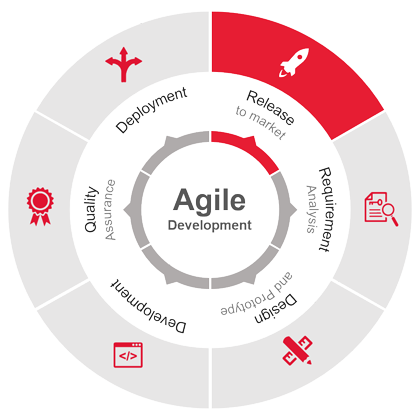
Phases of SDLC
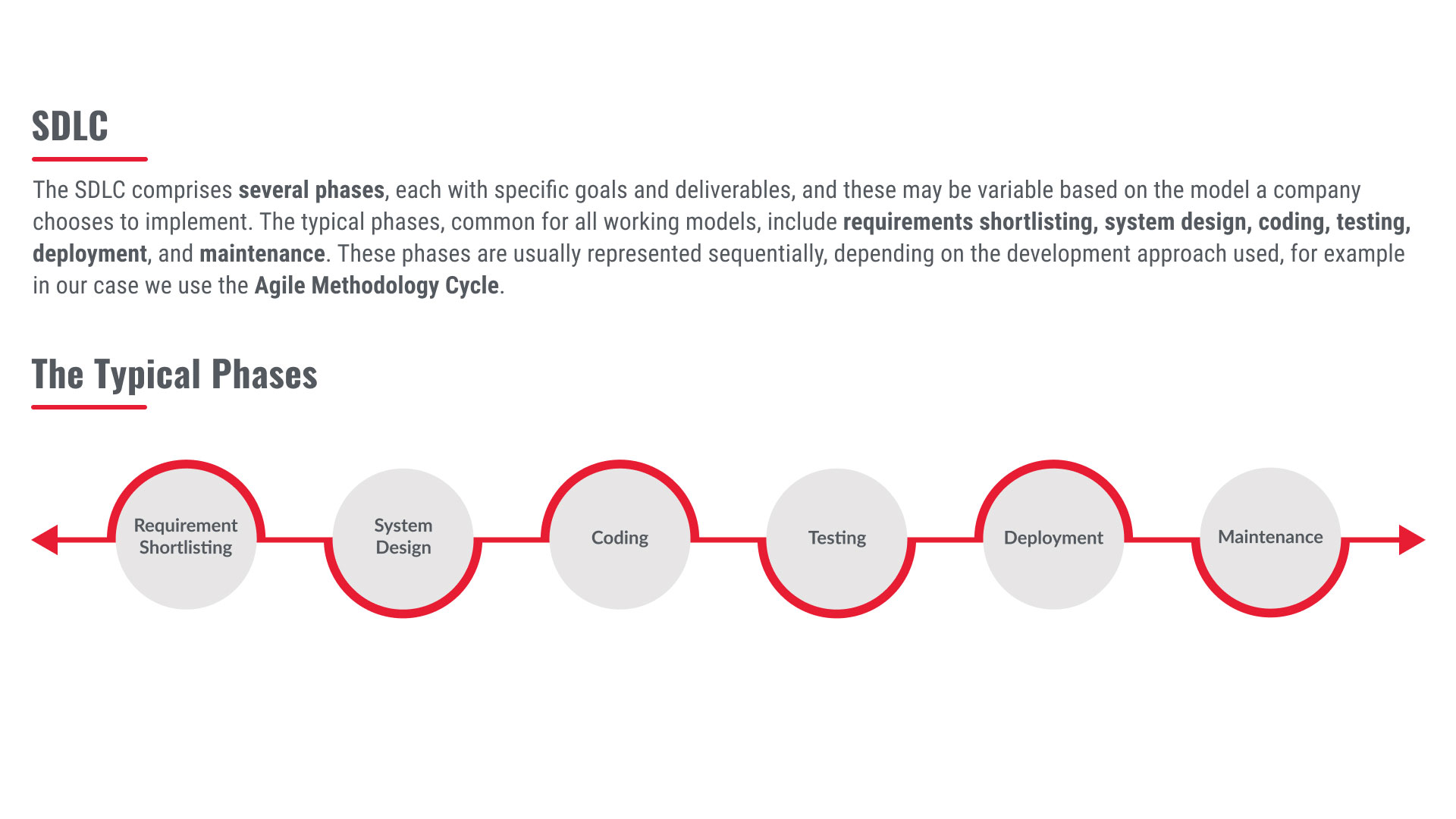
Models of Software Development Process
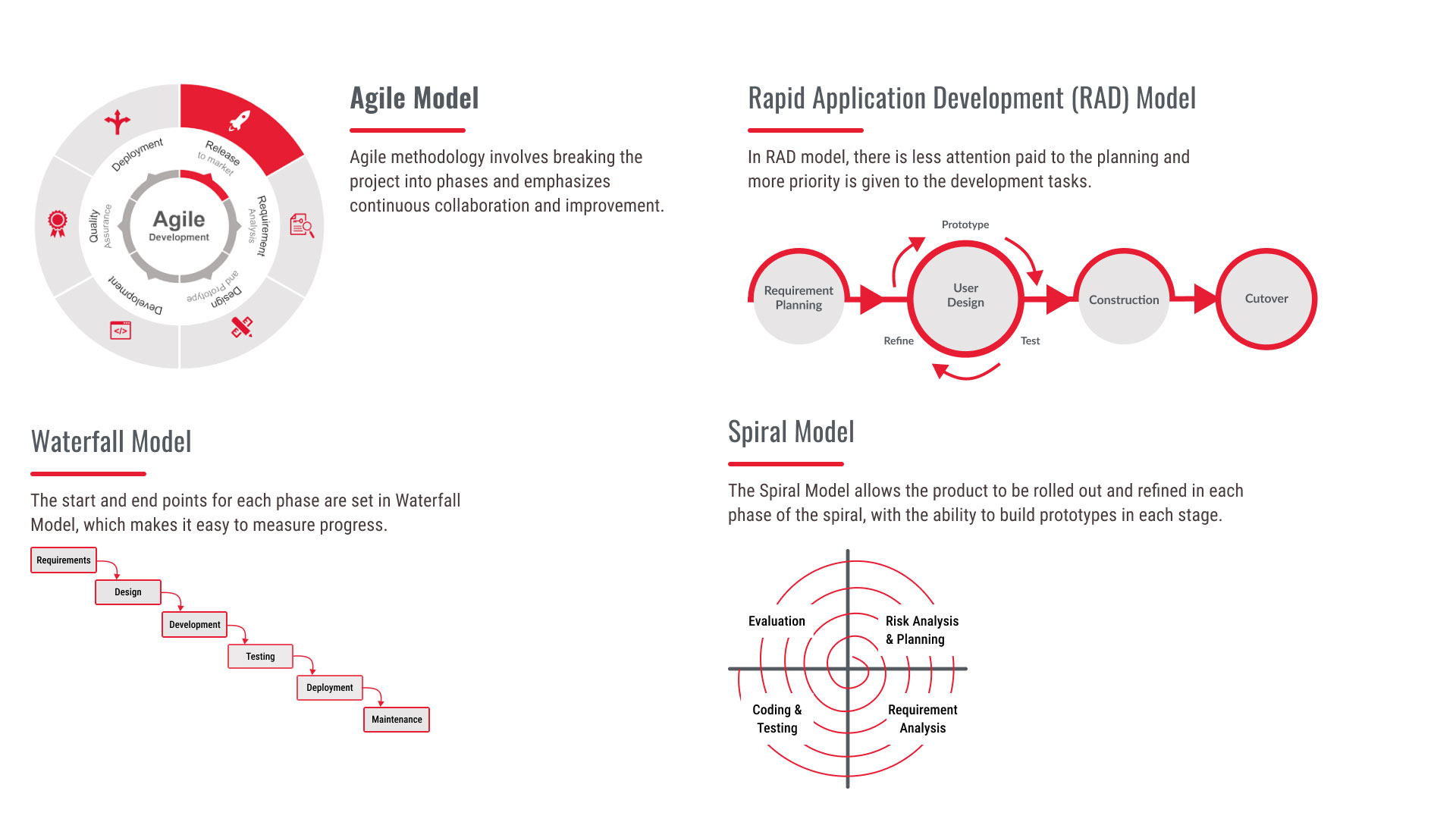
Agile Methodology in SDLC
The Agile framework breaks down the development process into smaller iterations or sprints. Each iteration typically lasts for a few weeks and promotes small incremental improvements for the software. This iterative approach allows for constant feedback from all parties and flexibility in responding to changes.
Agile emphasizes strong collaboration and constant communication with customers, clients, and end-users. They are involved throughout the development process, providing feedback, and clarifying requirements. An integral part of the Agile process is regular meetings, such as sprint reviews, scrums, and daily stand-ups, which foster effective communication and cohesion between the remote software development team and the client.
With the Agile process as a part of our core practices, we embrace change as a natural part of the software engineering processes. We believe requirements are expected to evolve, and our remote teams are prepared to accommodate changes even in the latter stages of development.
We emphasize continuous planning, flexibility, and adaptability. Instead of detailed upfront planning, our remote tech teams maintain a prioritized backlog of features and requirements from clients. Planning is done at the start of each sprint, allowing for mind mapping and reprioritization based on changing requirements and feedback. We encourage changes in code and continuous testing throughout the development process. This ensures early detection of bugs and allows for timely resolution.
By leveraging Agile practices within the process of software development, we can provide benefits such as increased customer satisfaction, faster time-to-market, enhanced quality, and improved team cohesion and collaboration. It promotes a mindset of adaptability and continuous improvement to foster within our internal teams, enabling us to respond effectively to changing business needs.
Agile Methodology: How It Works
Our clients can have a brief rundown of these components to better understand our working styles and how we function as a remote extended team and as an offshore software development company in Bangladesh.
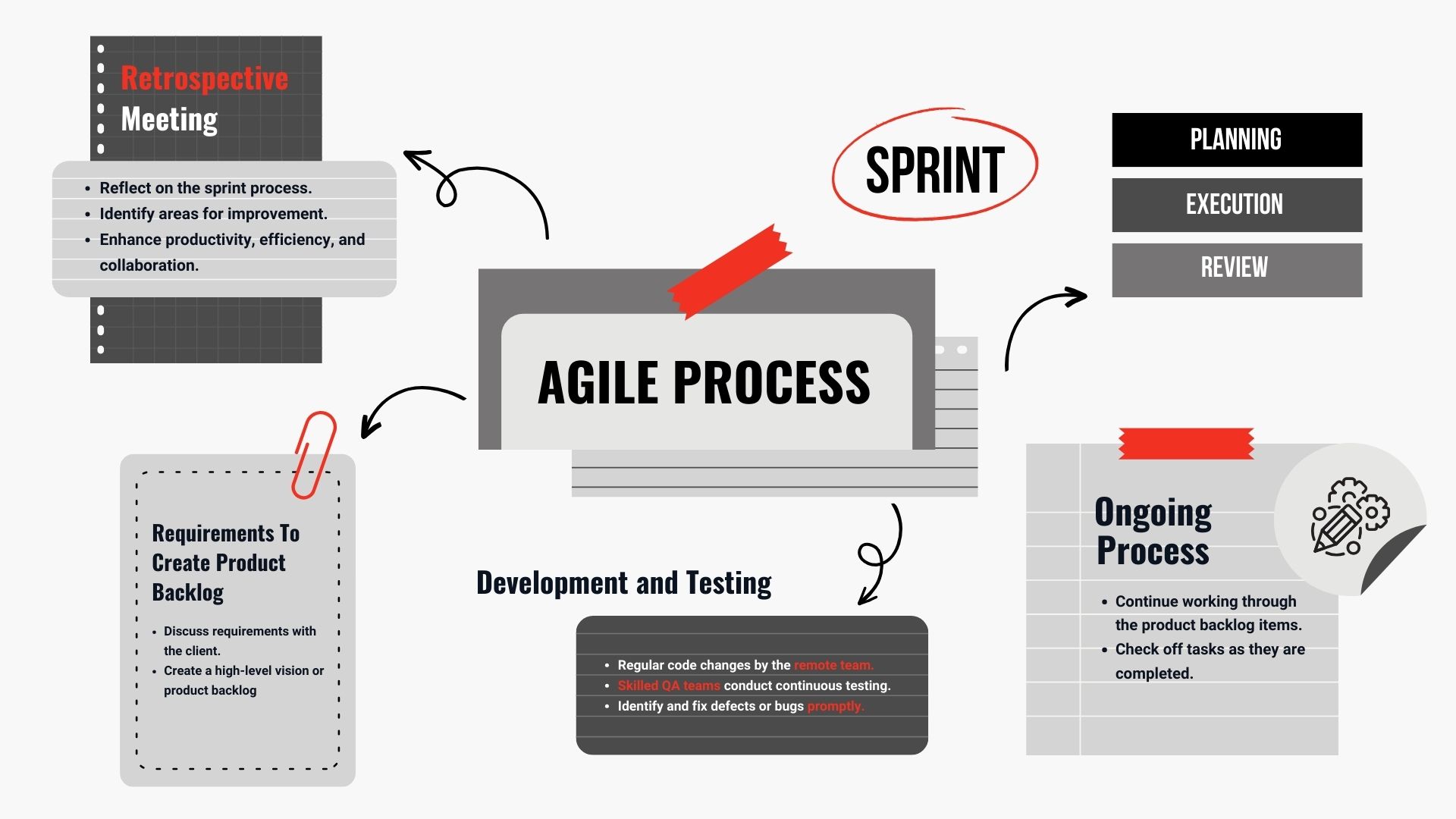
Our Process
Why We Chose Agile
We are a recognized custom software development firm in Bangladesh listed on platforms like Clutch, GoodFirms, Lusha, and Crunchbase. You can visit these to explore more about our company. To stay in real-time touch with us and what we’re doing, you can check out our LinkedIn.
Agile is not just an approach for our development but something we practice as a company culture. We are flexible, adaptable, and agile from mind and soul. To see some of the exceptional solutions we’ve built with Agile, visit our Portfolio page.
Offshore Teams and Software Development
We pay special attention to detail and the niche requirements of our clients. We have several services within our custom software services umbrella.
Each of our remote tech teams is groomed to be flexible, malleable, and communicative with your in-house teams. Special training is provided to nurture these skills so they can provide the best software solution which can help achieve your business goals.
Engineering Models
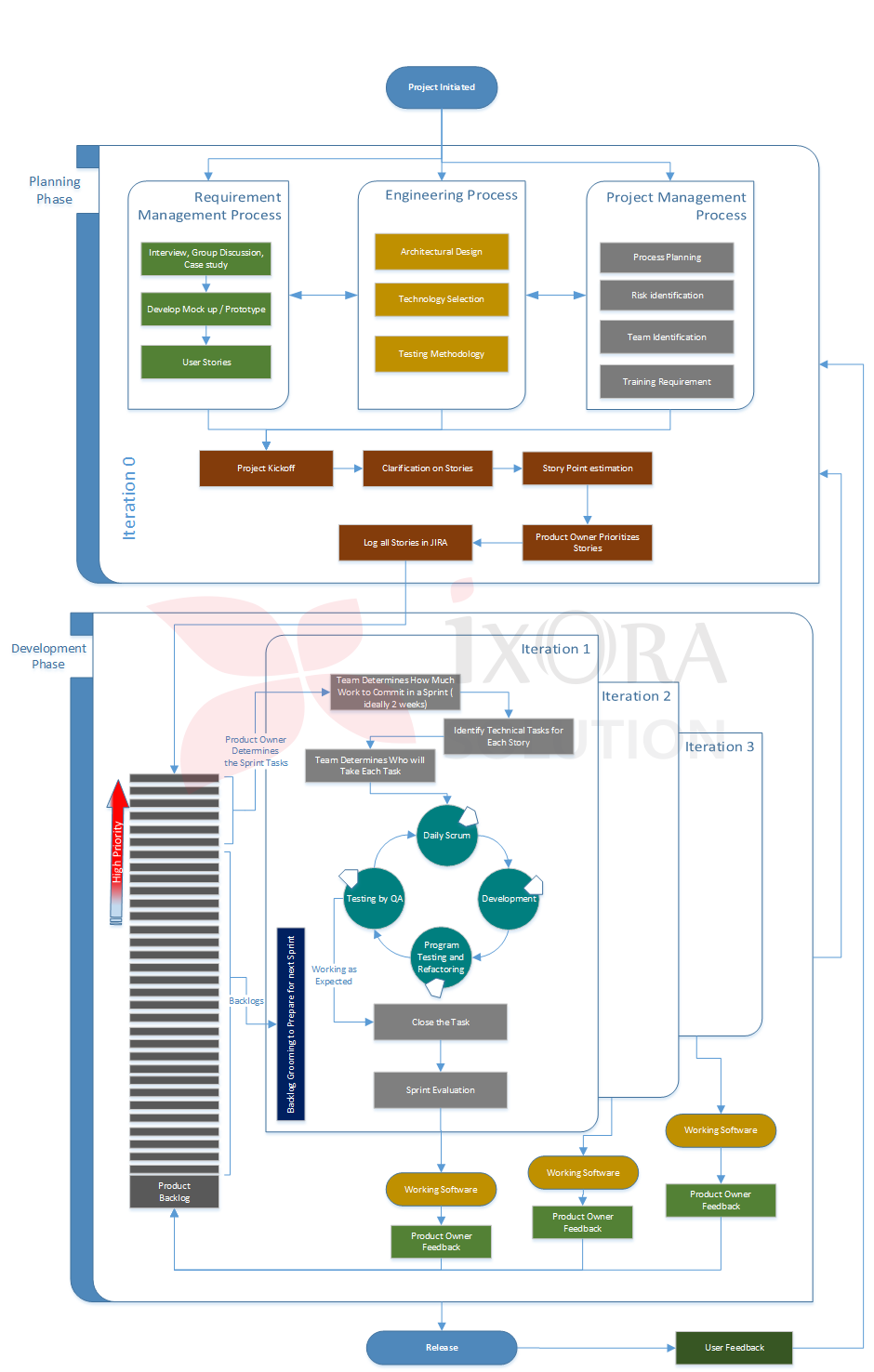
Requirements analysis is followed by design. The design is usually done in two stages: high level and detailed level. The High-Level design uses the User Requirements to derive the system architecture, application framework, interfaces, functional decomposition, dependencies, object design (excluding detailed descriptions), etc. The units arrived at during the High-Level Design decomposition, are further detailed in our formatted Detailed Design document. Detailed design includes details of the application framework, usage of architecture, object and class descriptions, etc. In the requirement management process, the team will identify the detailed requirement from a particular feature, mock–up the design, and make prototypes and documentation. Engineering Team can be involved in the process to make it well-defined and to take ownership of the requirement. It will help the engineering team to properly visualize the feature and its implication. In parallel to Requirement Management Process the Core Engineering Team can identify the architecture, technology, and testing methodology to provide quality solutions to the business problem. The Project Management team on the other hand can identify the development plan, project team, training requirements, and project risks.
One of the best offshore software development teams in Bangladesh
As we are an offshore software development company, we put heavy focus and resources on remote team building, adapting problem-solving skills, and collaboration. Apart from problem-solving, critical thinking also helps build better bonds between dedicated software development teams and our clients. We value the Art of Asking Questions and practicing these ideologies within daily activities like scrums.
In this competitive world, software development companies are expected to move quickly and adapt to new requirements or challenges while focusing purely on quality. Our mission is to provide ultimate solutions with quality which will add the highest business value to the client at a faster pace. We have some expert process engineers who have practical experience implementing CMMi (level-3) processes for software development.
We are one of the top software development companies in Bangladesh and we thrive for excellence in software production. Our years of experience in this field and industry have helped us learn, grow, and create specializations that cater well to diverse needs and requirements.
Let's get your project moving
Start things off with iXora Solution! Feel free to contact us at a convenient time and we'll get back to you as soon as possible.